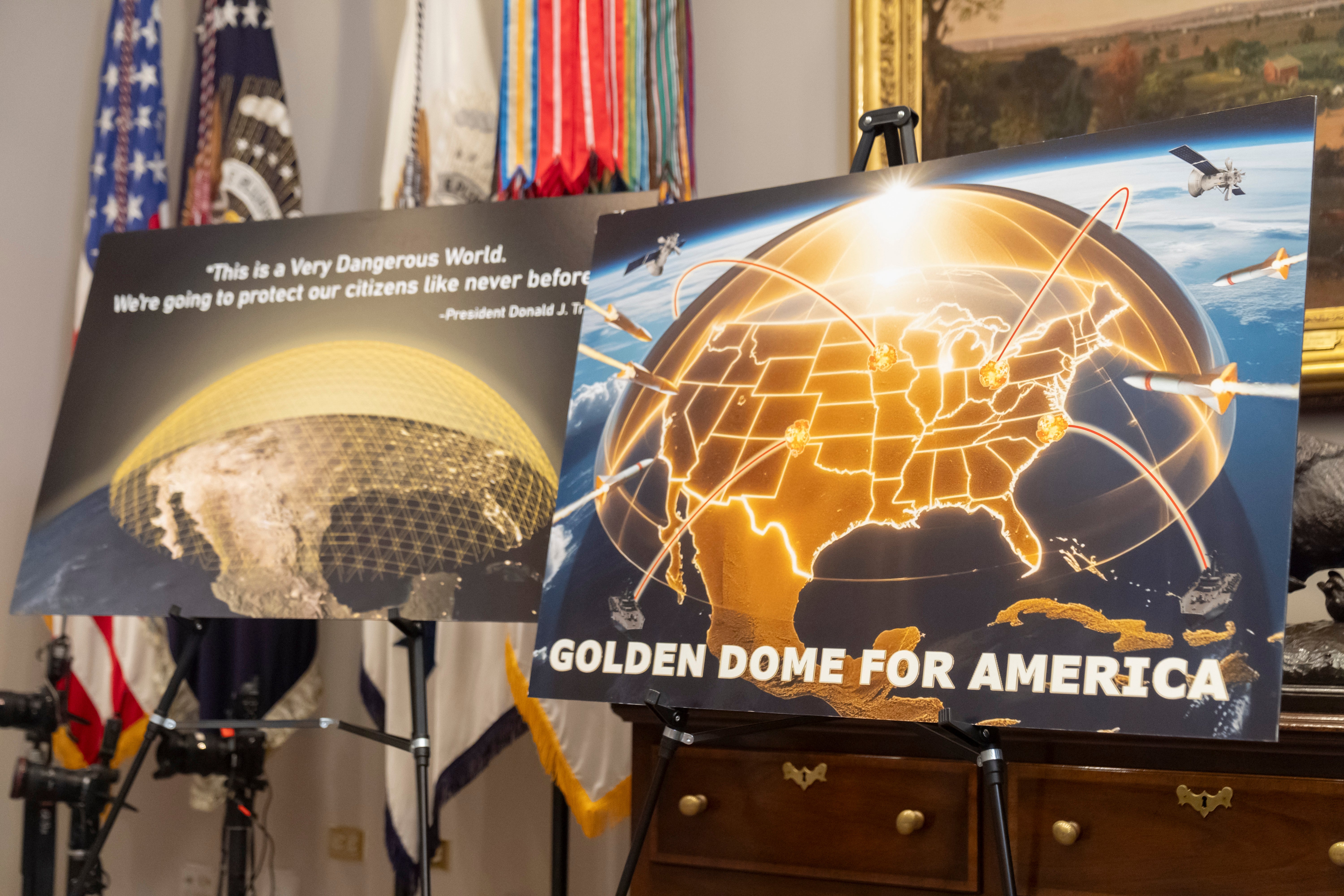ARTICLE AD BOX
With Ronald Reagan beaming benignly down on him from the portrait in the Oval Office, President Donald J Trump announced that, finally, his predecessor’s “Star Wars” dream of a comprehensive missile defence system to protect the United States will be realised.
Trump calls it the “Golden Dome” – and it’s a characteristically Trumpian project. And that’s not good.
First, it has to be “golden”. Trump has a Louis XIV-like obsession with it. His office has been steadily and literally gilded by gaudy nicknacks scavenged from the White House vaults, complemented by an excess of golden detailing in the plasterwork and the drapes. Even the TV remote control has been clad in gold.
So while the Israelis have greatly benefited from their American-supplied “Iron Dome” missile defence system – which has effectively neutered Iranian attacks – the one for America itself cannot be likened to base metal. The flashy graphics of the system used by the White House look like an ad for another Trump meme coin.
Second, the Golden Dome is overly ambitious in a way that is typical of Trump. Like his infamously unfinished and useless wall along the Mexican border, it is supposedly “visionary”, but is, in reality, flawed and vastly expensive. There is no reason why the relatively small Iron Dome system, designed to frustrate short to medium-range missiles, could be scaled up in anything like the way necessary to withstand a sustained attack from intercontinental ballistic missiles, or rockets from space itself.
Even if it could be made to work, it may not be 100 per cent effective, as is the case with Israel’s Iron Dome – and you wouldn’t want to be in a position where you’d need to find out. By that point, you’d have spent far in excess of Trump’s optimistic costing of $175bn finding out. Maybe he should ask his now strangely absent friend Elon Musk about whether the Golden Dome is a good use of American taxpayers’ money.
This brings us to the next typically Trumpian problem: it’s not very well thought through.
When Reagan proposed his Strategic Defence Initiative (SDI) in 1983, it was obvious who he had in mind – the Russians. Yet now Trump wants to befriend them and partner up with Putin, and maybe even Presidents Xi, Kim and others in a global strongman alliance. If Golden Dome is protecting America, who is it protecting it from? As yet unknown and unforeseen enemies would be a rational answer, but not if Trump wants to make friends with them all.

If that fails, then the Golden Dome system might be useful, but there’s nothing in principle preventing the Chinese from developing their own Dome – they have the money and probably the technology – and exporting it to their allies in Moscow, Pyongyang and elsewhere. Where that leaves the global strategic balance of arms, no one can say.
As the Israeli Iron Dome also proves, such innovation can create unintended consequences. Because the Iron Dome works so well, it has restrained Iranian aggression and sponsorship of Houthi and other Tehran-sponsored terrorism. That’s a good thing. But it has also liberated Israel from any restraints in waging its own wars.
The deterrent effect on Israeli policy of the missile arsenal owned by Iran and its allies, such as Hezbollah, has been neutralised, and all hell has now broken loose. Israel may in one sense be safer thanks to Iron Dome, but the consequent destabilisation of the region hasn’t added to its long-term security. It might well make Iran even more determined to acquire a nuclear weapon – plus a Dome of its own.
With Golden Dome, as with Reagan’s SDI project before it, the law of unintended consequences will make itself felt in potentially terrifying ways. If the traditional concepts of deterrence and “mutually assured destruction” are rendered obsolete, it is not possible to see what might follow. Except, that is, that China and Russia would not meekly do nothing, but would instead seek ways to restore the balance of power.
It would not necessarily, as perhaps Reagan once imagined and Trump might now, lead to universal nuclear disarmament. Indeed, back in the 1980s, the Russians regarded SDI as a “provocation”, and the Cold War turned even icier. It took years, aided by the practical difficulties of making SDI a reality, to result in new arms control talks between Reagan and Mikhail Gorbachev, and the 1987 intermediate nuclear weapons treaty.
Optimistically, maybe Trump’s Golden Dome project will have a happy ending. If peace is the goal, that’s hardly an ignoble ambition – a golden future. But given the president’s unpredictability and the sheer cost of the programme, the Golden Dome could also make our troubled world even more dangerous. It would be nice to think that our “stable genius” had thought all this stuff through.









 English (US) ·
English (US) ·